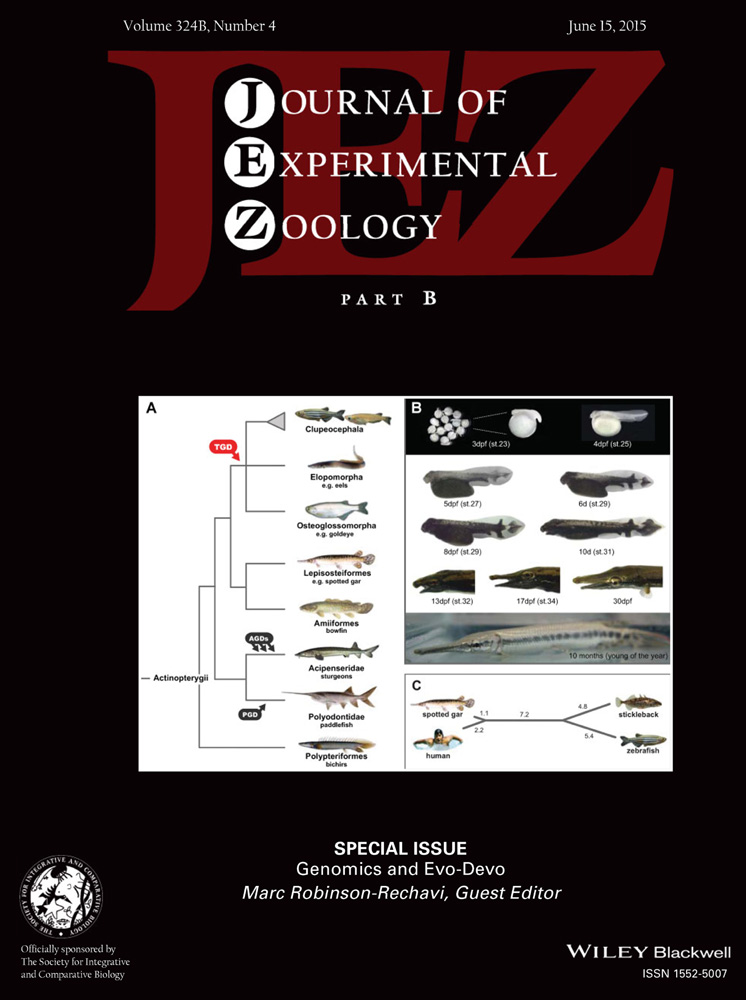Genomics is changing Evo-Devo
As recently as 2008, at meetings such as those of the European Society for Evolutionary Developmental Biology (in Ghent) or of the Society for Molecular Biology and Evolution (SMBE, in Barcelona), there was little cross-talk between Evo-Devo and evolutionary genomics (based on personal recollections). Yet, shortly afterwards, in 2010 and again in 2012, symposia on Genomics and Evo-Devo at SMBE meetings were very successful, whether measured by the number of submissions, the attendance, or the quality of the talks. Indeed, the rise of next generation genomics was allowing both the study of gene expression and regulation, always of key importance to Evo-Devo, and increasingly mechanistic insight into non-model organisms. And the same trends were highlighted by the turn that this journal took at the same time toward “Next Gen Devo-Evo” (Wagner, 2012). Following the success of these symposia, we decided to propose this special issue on “How genomics is changing Evo-Devo.” I am very grateful to the authors who contributed to this issue. Our focus was not here on new results, which are being published at an increasing rate, but to step slightly back and reflect on the ways in which Evo-Devo and genomics influence each other, learn from each other, and how the practice of Evo-Devo is changing.
First, Braasch et al. (2014) provided a stunning overview of the richness of fish diversity at the developmental and genomics levels. While fish genomics can be complicated by genome duplications, the smart use of new genomics techniques allowed Braasch et al. to show the direction toward understanding the mechanistic basis of the morphological diversity of half of vertebrate species. Next, Holland (2014) addressed the use of genomics at a wider time scale, for broad patterns. She showed that the differences in developmental patterns of divergence between ascidians, lancelets, and vertebrates are mirrored in many aspects of their genomes, coding, and non-coding. Indeed, this access to non-standard genic elements (highly conserved non-coding elements, microRNAs, etc) is one of the huge benefits of genomics for Evo-Devo. Gramzow and Theißen (2015) showed how comparative genomics can provide us with critical information on the importance of members of the MADS-box genes, key regulators of plant development. Comparing morphological changes with patterns of repeated loss of some genes, and strong maintenance of others, provides clues to the molecular development basis of these changes.
To make the best use of functional genomics in Evo-Devo, there are many challenges, which are very solidly covered by Pantalacci and Sémon (2014). While some of these challenges are general to non-model organism genomics, such as mapping RNA-seq in the absence of a good reference genome, some are more specific to developmental studies, such as heterochrony or differences in tissue composition between species. In Roux et al. (2015), we complete this with an overview of more specific bioinformatics challenges posed by Evo-Devo, and hopefully provide solutions, or lead toward solutions. Finally, Kalinka (2014) provided a broad and insightful view of the relevance of understanding life history and ecological strategies to build better experimental designs, so as to best harness the power of genomics in understanding evolution.




